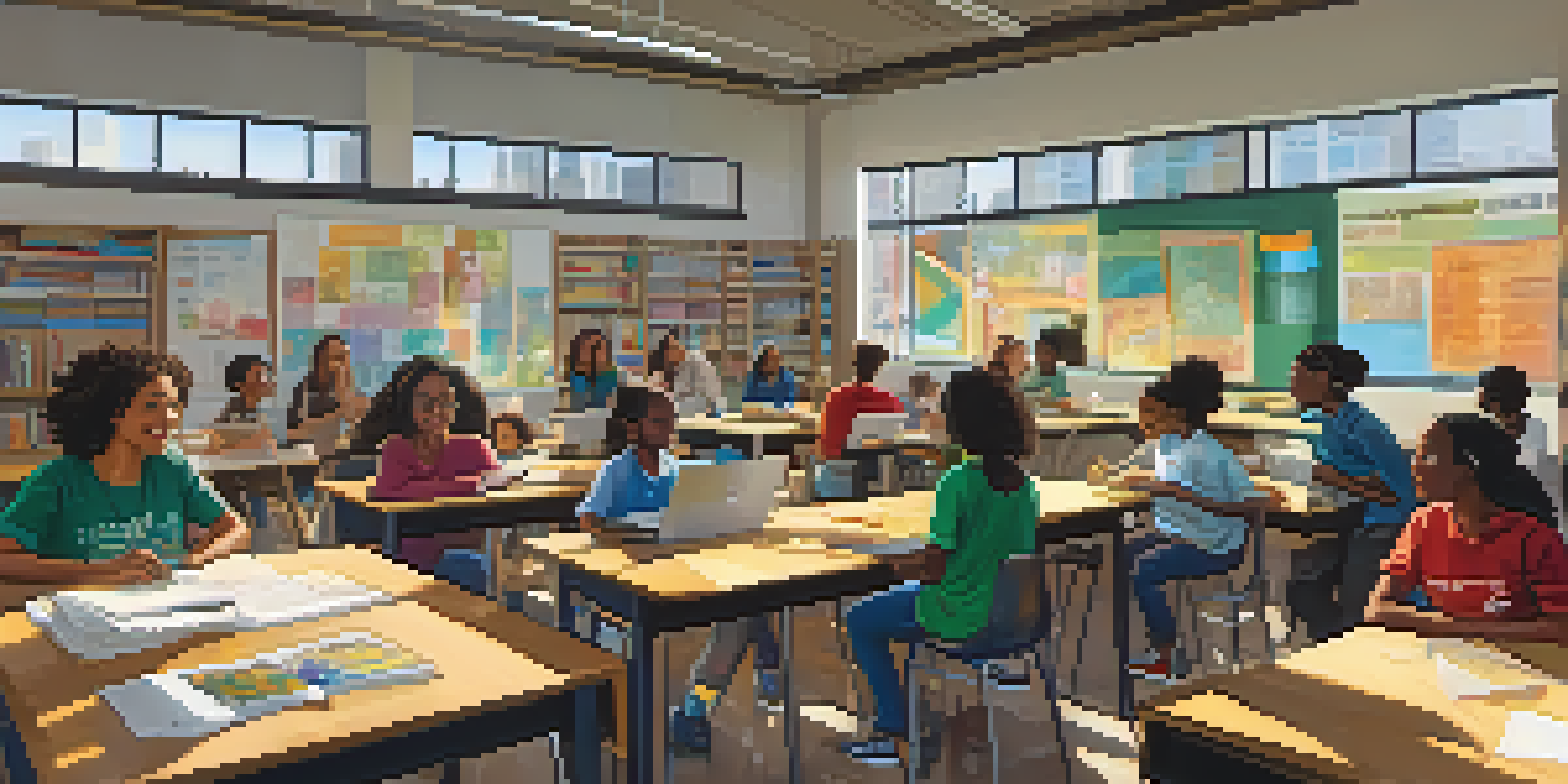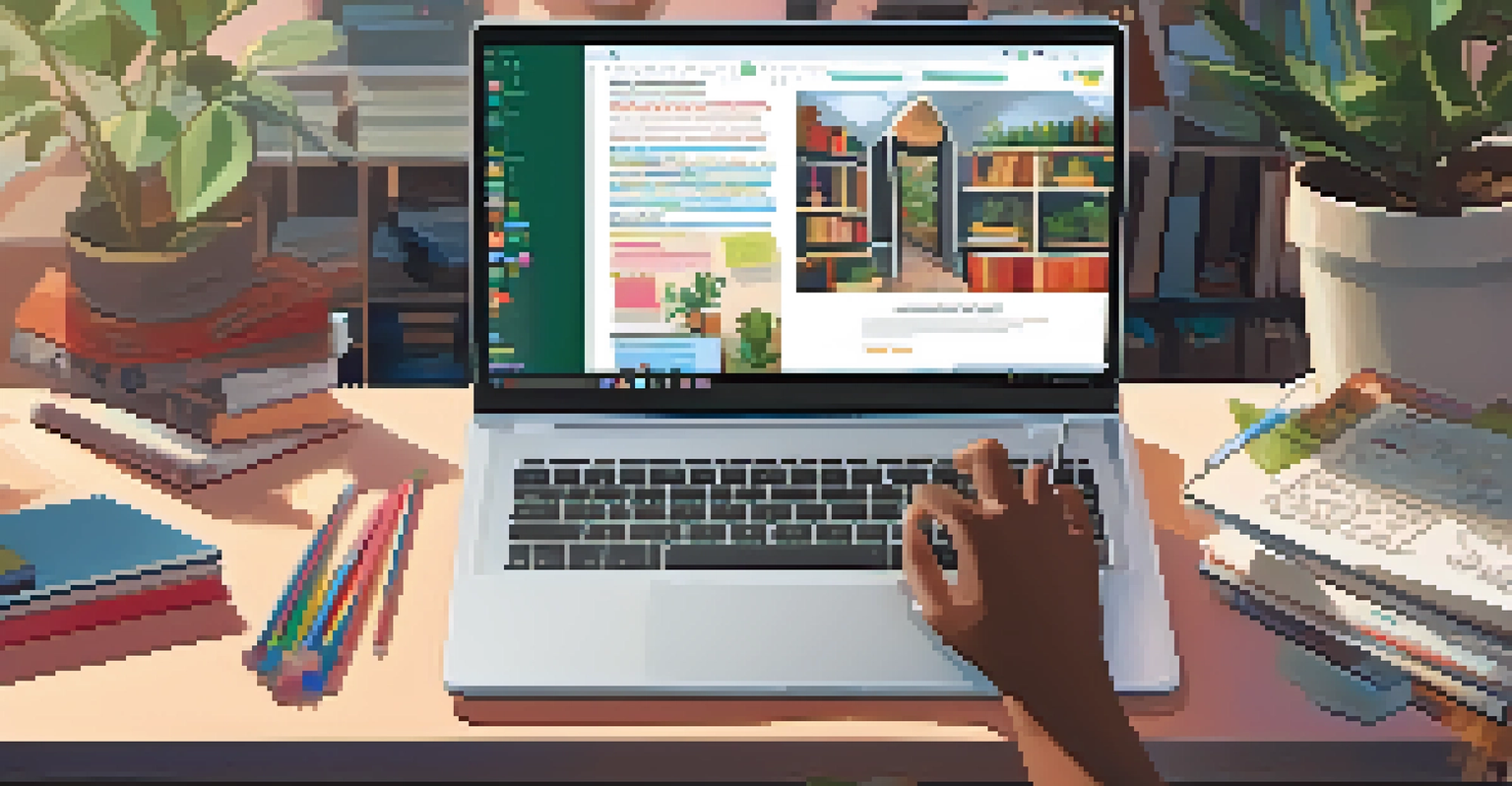Education Disparities in Minneapolis: Bridging the Gap

Understanding Education Disparities in Minneapolis
Education disparities in Minneapolis are stark and multifaceted, reflecting decades of systemic inequality. These gaps often manifest in varying resources, teacher quality, and student outcomes, creating a challenging landscape for many learners. For instance, students in underfunded schools may lack access to advanced coursework or experienced educators, which can significantly impact their future opportunities.
Education is the most powerful weapon which you can use to change the world.
Moreover, these disparities frequently align with socioeconomic and racial lines, with students of color disproportionately affected. According to recent studies, minority students in Minneapolis face hurdles that their white peers do not, leading to lower graduation rates and college enrollment. Understanding these disparities is crucial for developing effective strategies to bridge the gap.
Addressing these issues requires a comprehensive approach that considers the unique challenges faced by different communities. By acknowledging the root causes of these disparities, we can begin to formulate solutions that promote equity and ensure all students have the opportunity to succeed.
The Impact of Socioeconomic Factors on Education
Socioeconomic factors play a significant role in shaping educational experiences in Minneapolis. Families with lower incomes often struggle to provide essential resources such as books, internet access, and extracurricular activities, which can hinder a child's academic performance. This lack of support can create a cycle of disadvantage, where students from low-income households find it difficult to compete with their more affluent peers.

Additionally, schools in economically disadvantaged neighborhoods frequently operate with fewer resources. This can lead to larger class sizes, outdated materials, and limited access to technology, which all affect the quality of education. Without adequate funding and support, schools may struggle to offer the enriching environments necessary for all students to thrive.
Education Disparities Persist
Systemic inequalities in Minneapolis create significant gaps in educational resources and outcomes, disproportionately affecting students of color and those from low-income backgrounds.
Understanding the relationship between socioeconomic status and educational outcomes is vital for creating targeted interventions. By prioritizing resource allocation to underserved communities, Minneapolis can work towards leveling the playing field and ensuring every student has the chance to succeed.
Racial Disparities in Educational Access and Achievement
Racial disparities in education are a pressing concern in Minneapolis, where students of color often face systemic obstacles. These challenges can include biased disciplinary practices, lower expectations from educators, and a lack of culturally relevant curriculum. As a result, students may feel alienated or disengaged from their education, which can hinder their academic success.
The function of education is to teach one to think intensively and to think critically. Intelligence plus character – that is the goal of true education.
Statistics reveal a troubling trend: students of color consistently score lower on standardized tests compared to their white counterparts. This achievement gap not only affects their educational journey but also their future prospects in higher education and the job market. Addressing these disparities is not just a matter of equity; it's crucial for the overall health and growth of the community.
Efforts to combat racial disparities should focus on inclusivity and representation within schools. By fostering an environment where diverse cultures and histories are celebrated, Minneapolis can create a more engaging and supportive educational experience for all students.
The Role of Community Organizations in Bridging Gaps
Community organizations play a vital role in addressing educational disparities in Minneapolis. These groups often provide supplementary resources, tutoring, and mentorship programs that help students overcome challenges. For example, organizations focused on literacy can help students improve their reading skills, while others may offer college readiness workshops to prepare them for higher education.
Moreover, community organizations often foster partnerships with local schools, creating a support network that extends beyond the classroom. By engaging parents and families in the educational process, these organizations can empower communities to advocate for their children's needs. This collaboration can lead to more tailored solutions that address specific challenges faced by students.
Community Support is Crucial
Community organizations provide essential resources and mentorship to help students overcome educational challenges and empower families to engage in their children's learning.
Ultimately, community engagement is essential in creating sustainable change within the education system. By harnessing the collective power of local organizations, Minneapolis can work towards bridging the educational gap and promoting equity for all students.
Innovative Approaches to Education in Minneapolis
Innovative educational approaches are emerging in Minneapolis as a way to tackle disparities. Programs that incorporate project-based learning, for instance, allow students to engage with real-world problems, making education more relevant and exciting. This hands-on approach can inspire students to develop critical thinking skills and a love for learning, regardless of their background.
Additionally, technology is being leveraged to enhance educational experiences. Online tutoring platforms and digital learning resources can provide students with access to information and support that may not be available in their schools. By embracing these tools, educators can create more personalized learning experiences that cater to individual students' needs.
These innovative methods not only help close the educational gap but also prepare students for a rapidly changing world. As Minneapolis continues to explore new approaches, the focus should remain on equity and access, ensuring that all students benefit from these advancements.
Policy Changes Needed for Educational Equity
To address educational disparities effectively, significant policy changes are necessary in Minneapolis. This includes revisiting funding formulas to ensure equitable distribution of resources across schools, particularly those serving low-income and minority students. By investing in these schools, the city can create a more level playing field for all learners.
Moreover, policies that promote inclusivity and diversity within the teaching workforce are crucial. A diverse staff can better understand and relate to students from various backgrounds, fostering a more supportive learning environment. Recruiting and retaining teachers of color should be a priority to reflect the student population and provide role models for young learners.
Policy Changes for Equity Needed
Equitable funding and diverse teaching staff are necessary policy changes to address disparities and promote an inclusive educational environment for all students.
Finally, ongoing evaluations of educational policies and practices are essential. By regularly assessing the effectiveness of initiatives aimed at reducing disparities, Minneapolis can adapt and refine its strategies, ensuring they meet the evolving needs of students and communities.
The Importance of Family and Parental Involvement
Family and parental involvement is a cornerstone of student success in Minneapolis. When parents are engaged in their children's education, students are more likely to achieve higher grades and have better attendance. This support can take many forms, from helping with homework to attending school events, all of which reinforce the importance of education.
However, many families face barriers that make involvement challenging. Work schedules, language barriers, and lack of access to transportation can all hinder parental engagement. Schools must recognize these obstacles and find ways to create welcoming environments that encourage families to participate actively in their children's education.

By fostering strong partnerships between schools and families, Minneapolis can help bridge the educational gap. Programs that provide resources and support to parents can empower them to advocate for their children, ultimately leading to improved educational outcomes for all students.